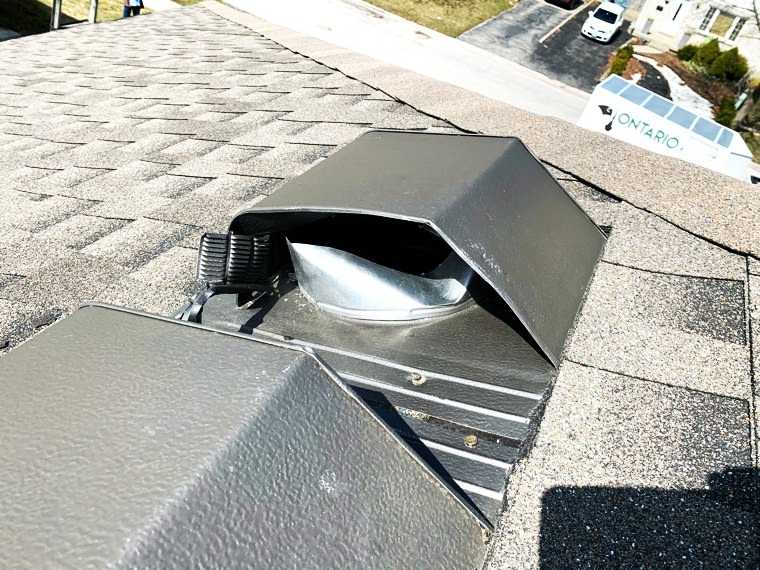
How Do Wild Animals Get Into A Home?
Posted by Jared Houliston Wednesday, April 1st, 2020 | 5,692 Reads
If you ask the average home owner if they think their home is protected from wild animal break-ins, they will probably tell you it is. This false sense of security is usually what leads to calls to local wildlife removal companies for animal removal services, and is what ends up costing a few thousand dollars in home repairs.
 The fact of the matter is most homes are highly susceptible to wildlife intrusions and it’s quite easy for animals like bats, squirrels, birds, mice and raccoons to get in. If you don’t know how wildlife are getting into your home, and if you don’t have prevention set up, your home is a sitting duck for wild animal break-ins.
The fact of the matter is most homes are highly susceptible to wildlife intrusions and it’s quite easy for animals like bats, squirrels, birds, mice and raccoons to get in. If you don’t know how wildlife are getting into your home, and if you don’t have prevention set up, your home is a sitting duck for wild animal break-ins.
There are things you could do to mitigate any potential problems in the mean time. We’ve put together an easy to read infographic titled “The Homeowner’s Guide on How Wildlife Get into a Home“. This infographic will visually display the common areas that different forms of wildlife use to get into a home and live there.
You can use the information to do a DIY home inspection, and if you do find signs of any entries, you can call your local wildlife removal company to do an inspection to see if there are any wildlife residing in your home. Note: if you hear knocking sounds, scratching or running around in your attic at night, you probably already have a wildlife issue and therefore should call a pest removal company ASAP before the problem becomes expensive.
Wildlife Entry Point Quick List
This is a quick-list of common entry points that home owners can refer to but check out the detailed information graphic below for an extensive list and explanation:
- Weeping brick
- Eavestrough and roof line
- Roof vents
- Side air vents
- Roof soffit intersection
- Gable vents
- Through the chimney
Share This Guide on Your Site!
If you own a wildlife habitat website, or any website related to animals and wildlife, you can use the following code to embed the infographic below onto your website page or articles.
If you would like to share this infographic on your website, blog post or social media page, simply use one of the options below. You can also share it by using the social media buttons at the top of this article.
For the text box below, click in the box, right click and hit “copy”. You can then paste it into your article or web page.
View and print the PDF version here – Click the image below to download it for sharing
Once you’ve gone through the infographic guide above to see how wildlife can get in, you can read our article explaining Top 10 Ways To Stop Wildlife From Getting In Your Home which is another guide that helps you figure out ways of stopping animals from getting in without having to call an animal removal specialist.
Why We Created This Guide
We decided to create this infographic guide for two reasons. One was so home owners can perform a do-it-yourself inspection of their home for susceptible areas of their home for wildlife break-ins. The second reasons was so that other websites that are used to educate readers about animals can provide their readers with a comprehensive guide without having to write the content themselves.
This way, the information can be disseminated freely and widely, and eventually find home owners that would like to protect their homes before having the spend a lot of money in damages due to wildlife entries.
Sharing Options
You can use the following options if you would like to share this infographic on any of your articles or social media sites. Simply use one of the options below.
For the text box below, click in the box, right click and hit “copy”. You can then paste it into your article or web page.
View the PDF version here – You can click the image above to download it for sharing.
Ontario Wildlife Removal Inc. provides wildlife removal and pest control in Southwestern Ontario, including Brantford, Kitchener-Waterloo, Cambridge, Guelph, London, Woodstock, Tillsonburg, Simcoe, Port Dover, Paris, St. George, Six Nations, Caledonia, Burlington, Waterdown, Oakville, Hamilton, Stoney Creek, Grimsby, & Niagara Region. Our methods are safe, humane and environmentally friendly. Call today to book your inspection.
Get a Pest Control Quote
Simply fill in your details below and we'll call you very shortly to discuss your issues.






Leave a Reply